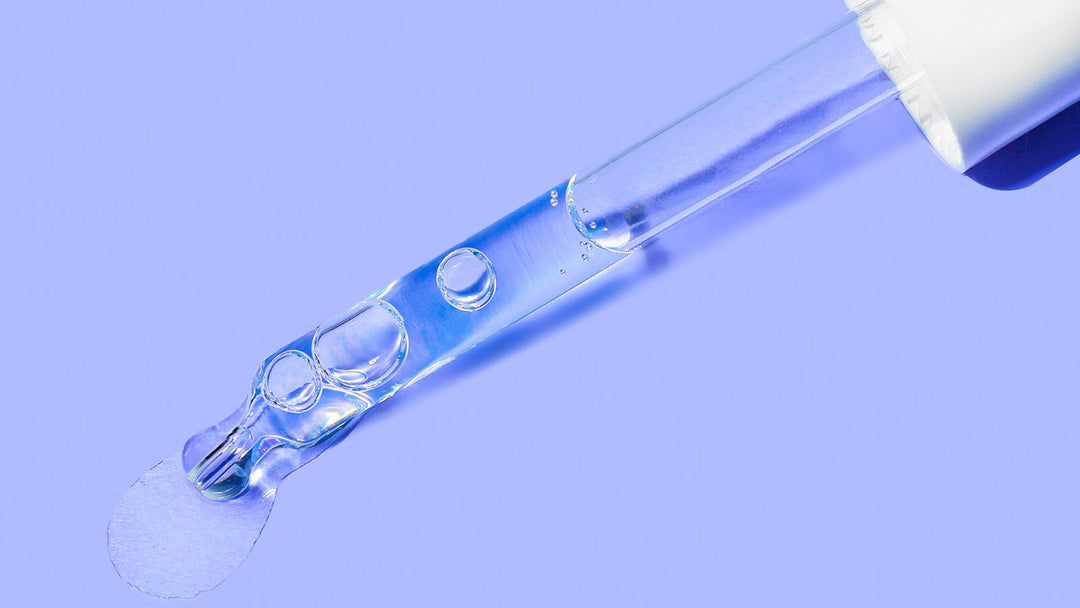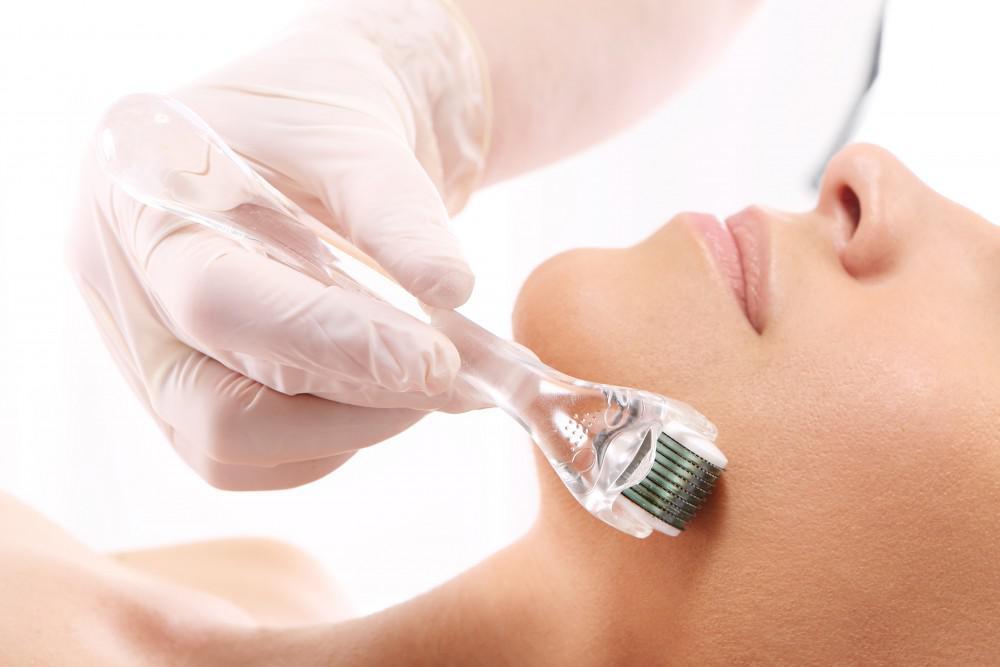What Is Non Surgical Chin Augmentation?
Sculpting and contouring of the jawline is becoming increasingly popular. Wondering how to achieve a stunning bone structure? The combination of chin augmentation and jawline contouring provides the best results. The goal of this combination is to create a strong balance in the lower part of the face.
It's amazing what facial contouring can do for your appearance. It can enhance a person's facial outline and make their facial features appear more balanced. If you have a round jawline, sagging jowls, or receding chin, jawline contouring may be beneficial to you.

The ideal angle for women's jawlines is 110-120 degrees, while for men it's between 100 and 110 degrees. Non surgical chin augmentation uses dermal fillers to contour the face.
Several dermal fillers can be used for chin augmentation and the most commonly used ones are Radiesse, Juvéderm, and Restylane Lyft.
What Are Dermal Fillers?
A dermal filler is a gel-like substance that is injected beneath the skin to improve volume loss, smooth lines, soften wrinkles, or enhance facial contours. Every year, more than 1 million men and women use this cost-effective facial rejuvenation treatment in hopes to look younger.
The use of dermal fillers can reduce facial lines and restore volume and fullness to the face. Subcutaneous fat on our faces naturally decreases with age. This results in more pronounced smile lines and crow's feet because the facial muscles are working closer to the skin's surface.
Facial skin also stretches a bit, contributing to this loss of volume. Sun exposure, heredity, and lifestyle are also factors that affect facial skin. If you are experiencing early signs of aging or are considering facial rejuvenation surgery, dermal fillers can be of great help.
How Do Chin Augmentation with Fillers Work?
By using chin fillers, you can alter the contour and definition of your chin without having to undergo surgery. The procedure is popular among people who want a more balanced facial structure and are self-conscious about their side profile. Fillers for the chin can enhance your jawline, creating a more youthful appearance. Additionally, they can add more definition to the neck and face.
Chin filler injections can be performed by a doctor in an office or clinic relatively easily. Chin augmentation involves injecting temporary dermal fillers into the soft tissues of the jaw, which resemble gels. They are an excellent alternative to permanent implants.
However, if you are considering chin filler injections, it's essential to consult with a qualified medical professional as each filler has its risks and benefits.
Am I a Good Candidate for Non Surgical Chin Augmentation?
If you are not satisfied with the way your chin looks, chin augmentation can be just the right, subtle yet significant enhancement you need. However, chin fillers aren't suitable for everyone.
To get the best results, you first need to schedule a consultation with a licensed aesthetician to determine your aesthetic goals and discuss the appropriate treatment options for your particular case. Your best bet is to search for ‘best chin augmentation near me’ facility and book a consultation with an expert in the field.
If, for example, you have an already strong jawline, adding jaw fillers might make the bottom part of your face appear heavy. It's also important to determine which parts of the chin need treatment - no two people are alike, so placement will vary.
What to Expect from Chin Augmentation Fillers?

The whole procedure of injecting chin augmentation filler can take between 10-15 minutes. When getting fillers for the first time, your doctor may start with a small amount to gauge the response of your chin. As the fillers are being injected into the chin and jawline, the doctor molds and massages them into place.
In most cases, injections cause only mild discomfort. During the first few days, there may be some slight redness and soreness in the area. You can return to work the same day with no downtime. Still, having your jawline enhanced by a dermatologist who is experienced in cosmetic procedures and injectable fillers is the key to getting the best results.
Do Chin Augmentation Fillers Hurt?
Chin augmentation with filler is relatively painless. Many fillers contain lidocaine, a numbing medication. As the dermatologist injects the filler, you may feel some discomfort, but it is temporary. It is normal to experience some swelling and tenderness in the chin after the procedure.
This swelling will subside within 24 to 48 hours. Strenuous activity should be avoided for at least 48 hours to prevent changes in filler position.
Recovery and Results
Chin augmentation with fillers doesn't require anesthesia, bandages, stitches, or scarring, and downtime is minimal. In most cases, you can resume your daily activities right away. There may be swelling, redness, or bruising after the procedure, but it will resolve itself.
You can reduce swelling more quickly by sleeping with your head and neck elevated. Avoid rubbing or touching the treated area after your procedure so that the filler can settle properly.
You can see the results of your chin enhancement instantly, and they usually last for 12 to 24 months. The first step in chin augmentation is to try fillers to see how the enhancement appears, and then you can undergo surgical chin augmentation if the results don't last.
Surgical Chin Augmentation
In order to alter or improve the appearance of the chin, surgery can be performed. Chin surgery can either be performed as an augmentation or as a reduction.
Chin Implants
An under projected chin is usually augmented with chin augmentation surgery. The procedure involves placing an implant directly on the bone. Small incisions are made inside the mouth or beneath the chin's skin. The incision is closed with sutures after the implant has been placed. There may be mild swelling for a few days, but patients usually resume work within a week.
Chin Reduction Surgery
A prominent or over projected chin can be reduced with chin reduction surgery, or chin shaving surgery. A general anesthetic is typically used for the surgery, which is performed as an outpatient procedure. Then, the surgeon makes a small incision inside the mouth or beneath the chin. A contouring procedure is used to remove excess bone and shape the chin. Finally, the incision is closed with sutures.
Chin Augmentation Fillers vs. Chin Implants
Chin augmentation can be surgical or non-surgical, depending on the strength, receding, or unevenness of your chin. While both procedures have advantages and disadvantages, your chosen aesthetician can guide you to the one that is most suitable and effective for you. However, it is also personal preference that ultimately determines which is the best option for you. There are several benefits to chin augmentation with fillers, including:
- A quick procedure
- There is no downtime
- You can see the results right away
- In contrast to surgery, the results are not permanent, making it less of a commitment.
- It doesn't have risks and side effects like a surgery
- Anesthesia is not required
- There is no scarring
How Long Do Chin Augmentation Fillers Last?

Different types of fillers have different effects. How long chin fillers last depends on the filler type, the treatment area, and an individual's body chemistry. In general, more deeply injected, denser products last longer. There are times, however, when this is not the case.
The most temporary option is hyaluronic acid fillers, which usually last six to twelve months. The doctor may recommend these options to someone who is trying filler for the first time. Calcium hydroxylapatite may also be used as a short-term dermal filler for about 12 months.
Chin augmentation with soft tissue fillers is considered off-label, since soft tissue fillers are not FDA-approved.
Which Filler Is Best for Chin?
The two most commonly used dermal fillers for the chin are Juvederm and Restylane. Due to the bony nature of the chin, thicker fillers tend to work better. The Juvederm Voluma is a popular choice for chin injections and usually provides good results. Additionally, this filler lasts the longest among hyaluronic acid fillers.
The use of Restylane Lyft in the cheeks can also provide good results on the chin. In terms of Restylane fillers, Lyft is one of the thicker options that is still malleable and suitable for the area. It is also possible to use other fillers in the chin, such as Radiesse. Nevertheless, it depends on the situation.
During your consultation, your chosen aesthetician will discuss your chin filler options and determine which one is best for you.
Potential Risks and Complications of Chin Fillers
In spite of the minimal risks associated with dermal fillers, all procedures can result in complications at some point. A few examples are:
- itchy skin
- bruising
- swelling
- infection
- overfilling
- distortion
- scarring
- abscesses
- filler shifting from the injection site
The body's immune system may react negatively to the filler if it perceives it as a foreign object. Hence, the body may produce foreign body granulomas, which are masses of tissue, or non-inflammatory nodules, which are lumps.
The following complications may occur in rare cases:
- soft tissue damage
- blindness
- stroke
It is possible to reduce the risk of experiencing relevant medical issues by choosing a healthcare professional who is appropriately qualified to conduct these screenings.
Chin Filler Augmentation Cost
Several factors can affect the cost of chin filler injections, including:
- Qualifications and expertise of the doctor
- The amount of time and effort needed
- What kind of filler is used
- Procedure type
- The geographical location
The majority of people need several syringes of filler in order to achieve the desired results. Syringe prices can vary, but the American Society of Plastic Surgeons lists the following prices:
- Hyaluronic acid - $684
- Polylactic acid - $853
- Calcium hydroxylapatite - $717
Alternatives to Chin Filler

Individuals who would like a more permanent alternative to chin fillers may consider the following options.
Fat Grafting
This procedure involves injectable fillers, but surgery is also required. Liposuction is used to harvest fat from the abdomen, buttocks, or other suitable body area. The fat is then purified and injected into the face. Using this technique, you can restore volume, fill wrinkles, or build contours.
For the procedure to succeed, the grafted fat must develop a blood supply. About half of the fat that is injected permanently survives at the new location. For fat grafting to be safe and effective, a specialist must be trained in the procedure. It is therefore important for people to choose a qualified, board-certified cosmetic surgeon for their procedure.
Surgical Chin Implants
Cosmetic surgeons can place custom-fit chin implants during surgery to improve facial balance. The implant is usually placed around the existing chin and bone by a surgeon. Having this done will permanently improve the definition of a person's chin. In most cases, the surgery is performed as an outpatient procedure in under an hour.
Summary
In order to enhance the contour and definition of the chin, people who are unhappy with the appearance of their lower face may consider chin filler.
A chin filler is a nonsurgical procedure in which temporary dermal fillers are injected into the soft tissues of the chin. Those considering chin filler injections should consult a board certified cosmetic surgeon, who can provide advice about the appropriate type of filler and its suitability.
People who want a permanent alternative can opt for a fat graft procedure or a permanent chin implant.




